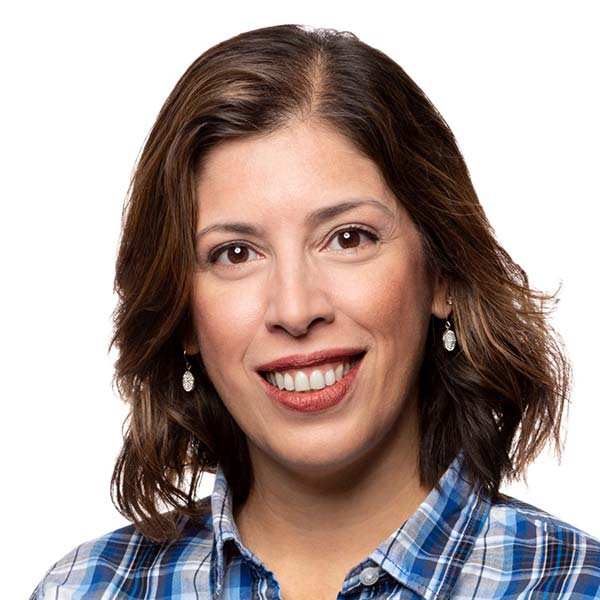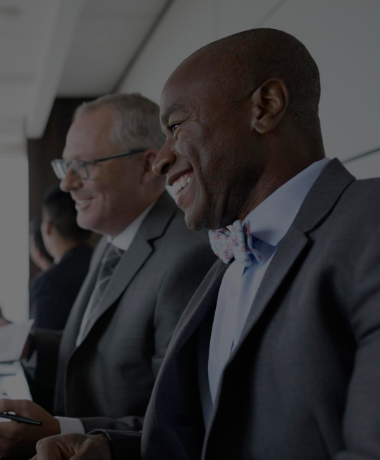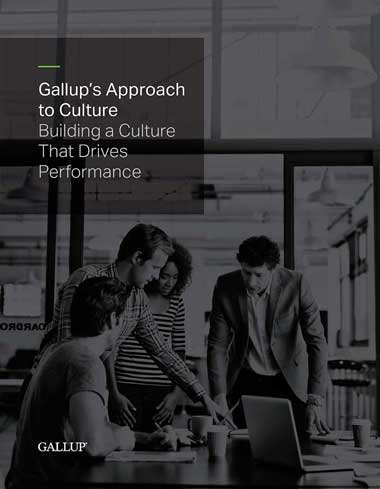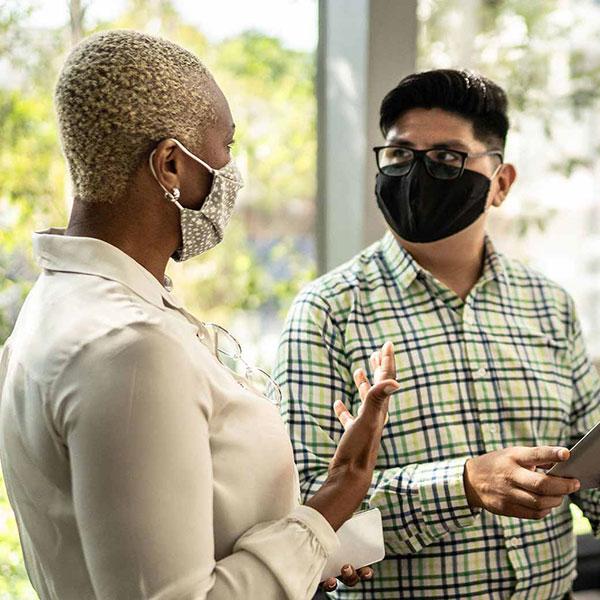A Conversation With Melissa Werneck

Melissa Werneck
Global Chief People Officer for Kraft Heinz
CliftonStrengths Top 5: Relator | Achiever | Learner | Responsibility | Deliberative
When Kraft Foods and the H. J. Heinz Company merged in 2015, Global Chief People Officer Melissa Werneck had "a beautiful opportunity to reimagine learning and development," she says. She wasn't about to miss that opportunity. Intellectual curiosity and development are deep values at Kraft Heinz -- and a competitive advantage. "Knowledge is the only thing that differentiates us," Werneck says. "And if you don't continue to develop, in five years, you will be obsolete. Maybe before that."
But Werneck was concerned that the sunk costs of physical spaces could eventually tie the company to obsolete learning models. To avoid that, she put most learning content on a digital platform called "Ownerversity."
Werneck says Ownerversity's library is enormous, so much so that it uses AI to point employees toward material pertinent to them. Still, everyone is encouraged to delve into functional "academies" such as finance, marketing and HR. The learner can rate the content and create as many shareable playlists from it as they like. "You can learn on any path, in any academy," Werneck says. "To democratize learning was an important principle for us."
That principle extends well beyond Ownerversity. Kraft Heinz employees have launched independent learning journeys they discuss on an internal chat site (called, perfectly, "KetchApp"), participate in Global Learning Days and investigate new career paths through others' playlists. That's just what Werneck hoped her "beautiful opportunity" would become, as she relates in this CHRO Conversation.
Emond: How did your merger affect your learning and development program?
Werneck: It gave us a beautiful opportunity to reimagine learning and development. Heinz had a model, Kraft had a different one, so we could choose one or the other, or create a third model. I had an opportunity at that time to visit a lot of companies, and I saw a lot of good work out there on learning and development -- a lot of good work.
But my view is that the majority of companies got so attached to those beautiful structures or campuses where they hosted their corporate universities that it was more difficult for them to let go of traditional approaches to adult education and embrace new technology. With the merger, we had an opportunity to reinvent learning.
Emond: So your program is built around tech more than physical space.
Werneck: Yes. I wanted to build something that, if someone invented something different, we could throw everything we had in the trash and rebuild without being concerned with all the sunk costs. So a lot of our approach is around technology. Our corporate online learning program -- we call it "Ownerversity" -- united us in this process, and we are able to deliver a lot of new content through it to employees, with our values woven in.
But, in whatever we do, however we deliver the learning, our goal is always to support intellectual curiosity and ongoing learning. Knowledge is the only thing that differentiates us. And if you don't continue to develop, in five years, you will be obsolete. Maybe before that.
Emond: Hold on. Your corporate university is called "Ownerversity"?
Werneck: That's right. We have six values, and one of them is: We Own It. It's related to the sense of accountability that we have to the company. Our chief learning officer, Pamay Bassey, crafted our mission for learning -- "Create a culture of continuous learning, bold creativity and intellectual curiosity." That's the spirit of our learning. The world's changing so fast, there is no longer time to focus exclusively on organizing large boot camps and work for weeks and weeks and weeks on nominations for learning experiences that, by the way, aren't so inclusive. For me, that's the opposite of agility. In addition to those types of learning experiences, we need to be able to deliver curated content every day, customized to the employees. And we expect employees to really look for it, that they will own their careers. Having a vibrant learning culture is imperative; we must provide and curate the content and put it in front of the employee when the employee needs it.
"Knowledge is the only thing that differentiates us. And if you don't continue to develop, in five years, you will be obsolete. Maybe before that."
Emond: Explain that -- "curated content when the employee needs it."
Werneck: I'll tell you a story about my own experience. I was in a finance meeting a few months ago, and someone used a term I'd never heard before. I thought, Well, hello … I am business savvy, but I don't know what they are talking about. So I went to Ownerversity on my cellphone without disrupting the meeting, and boom, an article popped up that explained the whole thing.
Or, say you want to train managers on how to interview a candidate, and you build a beautiful program on interviewing. But Ebbinghaus' "forgetting curve" tells us that the biggest drop in retention happens soon after learning -- without reviewing or reinforcing our learning, our ability to retain the information plummets. So six months from now, the manager won't remember all that they learned in that program. The interviewer needs a 10- or 15-minute refresher just before the conversation with the candidate. Along with a refresher of what was learned before, that manager will be reminded how to be a better interviewer for Kraft Heinz, to be a more inclusive interviewer, because our values are woven into the content.
Emond: How big is your content library?
Werneck: It's huge. Huge. A lot of it comes from external providers like Harvard Business Review and LinkedIn Learning. The challenge is how to curate that content. The key is machine learning, the ability to suggest the right content for each employee. We don't want to put the burden on employees who say, "I know it's my responsibility, I need to learn for my career … but there are 10,000 different things here. Which article should I read first?"
So we create content through academies -- the finance academy, the marketing academy, the operations academy, the leadership and culture academy, and so on -- in a way that's user-friendly. And it's very democratic. You can learn on any path, in any academy. To democratize learning was an important principle for us. Regardless of where you live, the language that you speak, if you are at home, at the office, at the airport or on the train, you can access this learning. Everything that we do, we first think about democratizing access to the learning. I would say the most rewarding feedback that we received from employees is that "It's in my phone, in multiple languages, in my time zone. I can learn at my own pace, and if I'm interested to go deeper, I can."
Emond: How do you sort content to learner?
Werneck: We categorize by the job family, and the program connects to the job family with suggested learning programs that you can read in the amount of time you have available, whether that's 15 minutes or hours. You can rate the article, and the organization will recommend more like it into a playlist. It's really like the Netflix experience. And you can follow the playlists of other roles or functions.
Emond: Who creates the playlists?
Werneck: Most of the playlists are related to the senior leaders, I would say, but anyone can make a playlist, and you can create as many as you want. There is no limitation on it. Our CEO has one; each executive and functional expert has one. But then again, we just released our aspirations internally at a leadership conference and decided before we talk about that with everyone, we need to do some education about diversity and inclusion (D&I) for employees. So some of our junior leaders/senior managers just created a playlist on D&I. I think we'll see more of that kind of thing in the future.
"Regardless of where you live, the language that you speak, if you are at home, at the office, at the airport or on the train, you can access this learning. Everything that we do, we first think about democratizing access to the learning."
Emond: Does Ownerversity affect internal mobility?
Werneck: Yes, yes, yes, it does. This is an organization that always encouraged that kind of movement. Let me give you my example. I am a chemical engineer by background. HR people look at that and think, What's a chemical engineer doing in HR? Because I wanted to move to HR! There are other examples like that -- employees who raised their hand and said, "I would like to move to marketing" or "I work in marketing, and I would like to move to finance." I think the programs, playlists, group discussions, all of it helps people feel not paralyzed. They can explore the academies as a first step, even just to see if they really would like to move.
Emond: Do you plan to have in-person learning again?
Werneck: Yes. Digital and in-person learning should coexist. In-person learning is important when you want to collaborate, when you want to build a deeper network, a closer connection, for people working on a project together for a specific amount of time. The bond that they create is stronger -- that's why much of our leadership master's program cohort for our more senior leaders is in person at Stanford. We moved the 2020 cohort to digital because of the pandemic, and our partners, especially Stanford, were amazing about pivoting everything to virtual. But, if you ask me, the outcome of the 2020 cohort was different from the previous ones. The content was the same, the discussions happened, they still created the bond … but I don't see them being as close as the first cohort yet.
So, I still see the value of in-person learning -- but don't forget the forgetting curve. When we were building our learning and development program and our chief learning officer at that time, now our VP of digital, showed me that curve, I almost fainted. Our approach is that learning must be live, new and right there, and our culture must foster continuous learning and intellectual curiosity.
Emond: No wonder you have to build L&D online.
Werneck: It's just so agile, and so many opportunities can come from that! For instance, we implemented in 2020 a learning marathon, called Ownerversity Day, with 24 hours of learning. That way, everyone in the world could join sessions with instructors available to all employees. The theme was on "owning your superpowers," which is, by the way, similar to the CliftonStrengths approach. We had 35 sessions in 24 hours, and 40% of our salaried workforce joined at least one session. The feedback was so positive that I said we have to repeat that every year.
But other times, people just learn because they want to evolve, because they are curious. Pamay created a movement called "Learn Like an Owner" that's tied to everything in Ownerversity but also fosters curiosity to explore things beyond your own area. It started when she told the organization she would learn something new every single day of the year and post what she learned on our internal social platform called KetchApp. She was the lone wolf for a while -- then our president of the Northern Europe business unit, who was the Europe chief people officer at that time, joined. Three years later, we have 1,200 people making commitments to learn regularly and share what they are learning. It's just remarkable.
"I think the programs, playlists, group discussions, all of it helps people feel not paralyzed. They can explore the academies as a first step, even just to see if they really would like to move."
Emond: Do you have Ownerversity where you want it? Are you finished?
Werneck: Our learning and development approach, from Ownerversity to Ownerversity Day, is a journey. It hasn't always been an easy journey. A lot of people said learning for them is in person, at a program or a boot camp with an instructor. This is a change, and we are still evolving. But technology is changing so much, delivery is changing so much, that you can't get attached to a building or to a delivery mechanism. And I don't want to build something for Kraft Heinz that would ever hold us back. You must evolve, and you have to keep learning to keep teaching. Now, we are encouraging employees to take their curiosity, their learning habit, and apply it to develop key capabilities that will drive our enterprise strategy, drive our company's growth. So, no, Larry, I would say you cannot be finished. In many ways, we are just getting started.
Explore other CHRO Conversations:
- Unilever CHRO Leena Nair
- Alimentation Couche-Tard Chief People Officer Ina Strand
- Novartis CHRO Steven Baert
- Philips CHRO Daniela Seabrook
- Thermo Fisher Scientific CHRO Lisa Britt
- IBM CHRO Nickle LaMoreaux
- Standard Chartered Bank Group Head of Human Resources Tanuj Kapilashrami
- Zurich Insurance Group CHRO David Henderson
Jennifer Robison contributed to this article, which was based on an interview conducted by Larry Emond.





